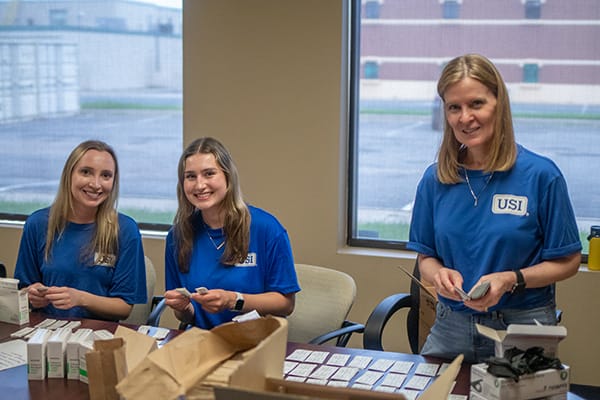Q&A: Learn about Harm Reduction
Whether you’re following the latest in overdose prevention and substance use disorder best practices or you’ve just been seeing social media posts from Avivo, you’ve seen us mention Harm Reduction. You might be wondering, “What is Harm Reduction?” In this Q&A we talked with program director Charlotte Morris and program manager Brandon Sanford to learn more.
What is Harm Reduction?
Charlotte: Harm Reduction is an evidence-based practice. It’s meeting people in the reality of what is, to support them in where they want to go and with whatever recovery looks like to them. At the heart of it, it’s a best practice of working with people who use drugs.
If you think about it in an oversimplified way, we reduce harm all the time. Driving a car is one example. Driving is dangerous, and wearing a seatbelt is harm reduction.
The movement of Harm Reduction, big “H” and big “R,” is a grassroots movement that started with people who use drugs supporting others who use drugs and finding ways to do it safely, to reduce harm.

Photo: A box of Narcan donated to Avivo in 2024.
Can you talk about how removing stigma can help Avivo serve people better?
Brandon: When we destigmatize illicit drug use, the most stigmatized thing in our society, think about all the other life problems people have that can be things for Avivo’s case managers to work with them on.
Destigmatizing drug use opens doors in ways that just don’t get opened if we’re not real about how substance use is playing a factor in people’s lives.
Charlotte: It’s really about the dignity of the person. One of Avivo’s values is “We have an absolute commitment to the dignity of all people.” We come with a predisposition to full and inherent dignity with the person we’re working with.
When we’re real and authentic with each other, change becomes more possible.
When and how did Avivo start leaning heavily into harm reduction?
Brandon: In 2018, the Wall of Forgotten Natives formed, a large encampment which was the first-of-its-kind in Minnesota. When surveyed, most of the individuals living there weren’t connected to services through Coordinated Entry, Minnesota’s route to being connected to housing. So, we had to ask ourselves as providers, “Why is that?”
One big reason we determined was because folks couldn’t be honest about their drug use, and when you combined that with other factors, we just weren’t reaching that community.
Charlotte: In December 2020, Avivo Village was created based on community response and the way Avivo showed up and created programs to meet the present need.
We meet people where they are, we recognize that people use and meet them in that.

Photo: USI volunteers spent the day putting together harm reduction kits for Avivo’s Street Outreach Team and other Avivo staff to distribute. If your organization is interested in volunteering, click here.
How would you say Avivo is leading in Harm Reduction in the region?
Brandon: I think the explicitness of harm reduction in our housing programs is what’s cutting-edge. Avivo Village and some of our other housing programs are practicing harm reduction.
What’s really novel is the partnership between property ownership, management, security, and Avivo doing services – we all know and agree that people choose to use substances. That does not happen in many housing programs.
What makes Harm Reduction successful?
Charlotte: I think it’s about authenticity in relationships. I think of people in my own life – if I have to avoid a part of my identity or “not go there’ in any conversation, those aren’t the people I’ll be closest to or I know I can trust.
When we have those relationships where we can be who we are, say what’s bothering us, and share what we’re holding that’s so heavy – those are the most trusting relationships.
How can the community support harm reduction? (donations, volunteering, kit creation)
Charlotte: Our program funds can’t be used for things like move-in baskets, hygiene and household cleaning supplies, and socks and underwear – so assisting individuals by donating those items, which can be found on our Urgent Needs (kits) and Wish List (individual items) can be extremely helpful for people.
Another way you can help is by “leaning into curiosity” – another of Avivo’s values. By looking past what we see and understand how people got to that place.
One last way is to ask your elected officials, local and national, to understand these issues and learn more.
As Charlotte and Brandon share, your support is needed to help provide urgent needs to individuals after they move into housing. You can make a financial donation here. If you’re interested in learning more about Harm Reduction after reading this Q&A, the National Harm Reduction Coalition is one of the best resources about what it is and how it works.